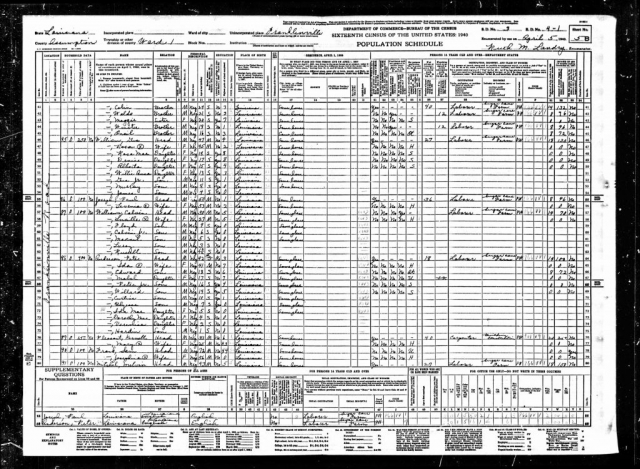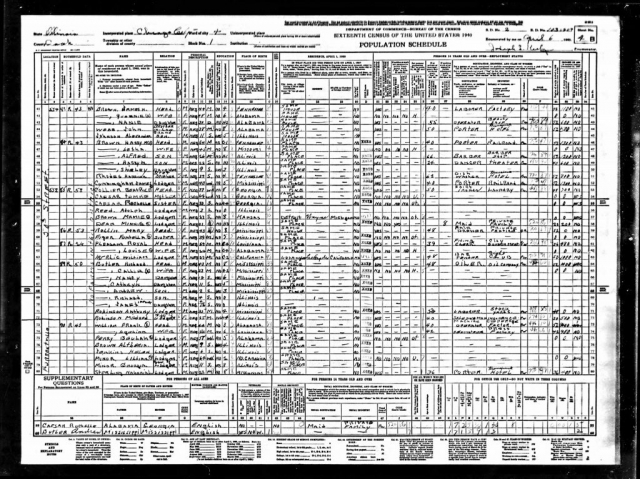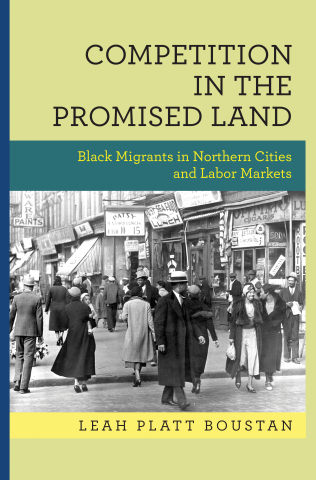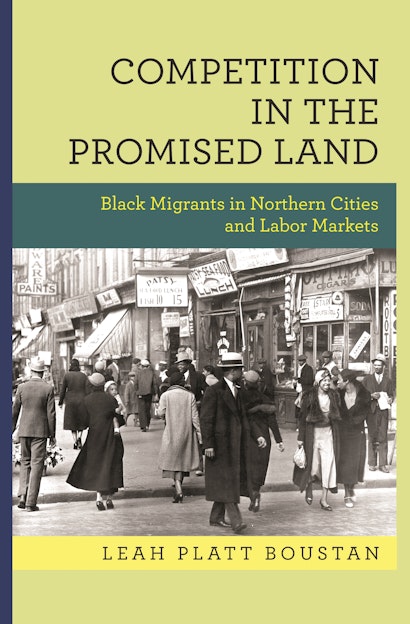In 1920, Kernell and Royal Pleasant, two brothers aged 13 and 11, lived with their parents and younger sister Jennie in Assumption Parish, the heart of Louisiana’s sugarcane region, 80 miles west of New Orleans. The boys’ father, Thomas Pleasant, was a carpenter who reported working “by the job.” Even this middling profession placed Thomas one rung above their neighbors, most of whom were farm laborers in the sugarcane fields.
By 1940, Kernell and Royal’s lives had diverged. Kernell, the eldest brother, still lived in the same ward where he had been as a boy, following his father’s footsteps into carpentry and earning only $200 a year. Royal, although younger by two years, had moved up to Chicago, joining the millions of other southern black men and women who moved to northern cities during the twentieth century. By 1940, Royal was a college graduate and worked as a filing clerk in a municipal government office. He earned more than twice as much as his older brother, reporting $480 of annual earnings.

Although separated by region, educational status, and earnings, one feature drew the Pleasant brothers together: both Royal and Kernell lived in all-black neighborhoods in 1940. Back in Louisiana, Kernell’s closest neighbors were all still laborers in sugarcane fields. Up in Chicago, Royal, his wife Louise, and their lodger William lived down the street from railroad porters, barbers, and laborers at the stockyards. Most of their neighbors were fellow migrants, hailing from Mississippi, Alabama, Georgia, and Tennessee. Royal Pleasant was only one of the four million black southerners who moved North from 1940 to 1970.

The Census rolls that document the Pleasant brothers’ lives offer one small glimpse into this mass movement. As it turns out, Royal’s success in the North was a highly typical migrant story. Using newly-digitized Census records, I was able to trace nearly 250,000 black men who were living in their childhood households in 1920 to their adult location in the 1940 Census. Many of these records contained sets of brothers, one or more of whom had moved to the North. Just as Royal was earning more than double his brother’s pay, I found that the average black man who moved North or West during this early wave of the Great Black Migration earned more than twice as much as his brother(s) who remained in the South.

The bar chart shows earnings estimates of the economic return to moving to the North for both black and white migrants. The blue bars compare earnings between migrants and non-migrants in the full population, and the green bars depict the results of a similar analysis for sets of matched brothers. In both cases, I find that black migrants earned twice as much as their southern counterparts, and white migrants earning around 50 percent more (the bars are presented in log terms; 80 log points is the equivalent of around 130 percent higher earnings). Half of the nominal return to migration can be attributed to higher cost of living in northern cities, but the other half represents a real increase in purchasing power.
The goal of examining brother pairs, rather than simply comparing all migrants to all men who remained in the South, is to account for potential selection in who chooses to move. If migrants were drawn from well-off households, a portion of the estimated return to migration would reflect this positive selection. If, instead, men from poorer households were more likely to move to the North, the estimated return to migration might be too low. The similarity of the estimates suggests that southern migrants were not especially selected, either positively or negatively, a pattern that is consistent with a large mass migration.
The 1940 Census was the first to include questions about individual income levels; earlier censuses only asked about occupation. As it turns out, most of the return to migrating to the North was driven by shifts from lower-paid rural occupations into higher-paid industrial or white collar positions. It was rare for migrants to remain in the same line of work as their brothers in the South. (There are always a few exceptions; the Allison brothers, David and Winston, both worked as waiters in restaurants, but David made twice as much in Chicago as Winston did in Birmingham, Alabama).
My ability to compare men who participated in the Great Black Migration to their brothers who stayed home is only possible because of large-scale digitization projects of the historical Census records. The manuscripts were transcribed by more than 25,000 volunteers organized by FamilySearch, the genealogical arm the Church of Jesus Christ of Latter-day Saints. Data files were then made available to researchers through a partnership between Ancestry.com and the Minnesota Population Center.
The digitized 1940 Census files include 134 million persons and 70 variables. From the 1940 Census, we can see only one snapshot of how Royal fared in his new life in Chicago and how Kernell managed back home. As new Census waves are released to the public (72 years after the surveys were taken), we will be able to follow these men and their many counterparts forward in time. Did Kernell ever join his brother in the North? Did Royal return to Louisiana, or one of the South’s burgeoning metropolitan areas, when it became time to retire? And how did the lives of their children (if any, as neither brother yet had children in the 1940 Census) unfold in their disparate settings?
On the last question, a new paper by Trent Alexander and co-authors uses restricted-access data from the Census Bureau to follow young children living in migrant and non-migrant families in 1940 to their adult outcomes in the 2000 Census. The children of migrants enjoy modest income gains even 60 or more years after their parents first moved to the North. Just as the parental generation was able to double their income by moving North, their children continue to enjoy a 10 percent earnings boost. The Great Black Migration is not only an essential chapter in black history but is still a vital part of black economic fortunes today.
Leah Platt Boustan is professor of economics at Princeton University, and a research associate at the National Bureau of Economic Research. She is the author of Competition in the Promised Land: Black Migrants in Northern Cities and Labor Markets.

